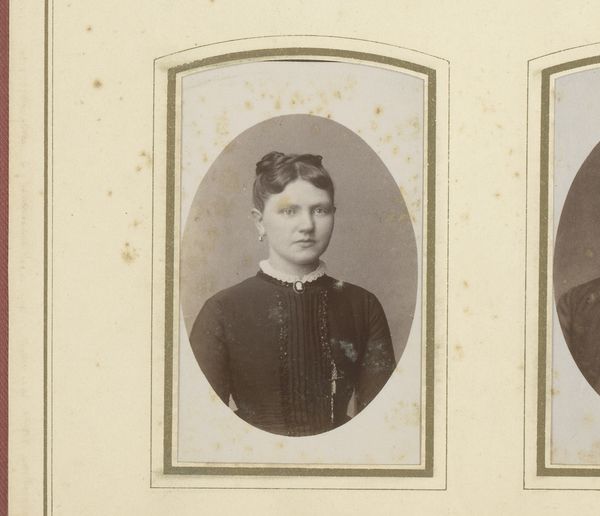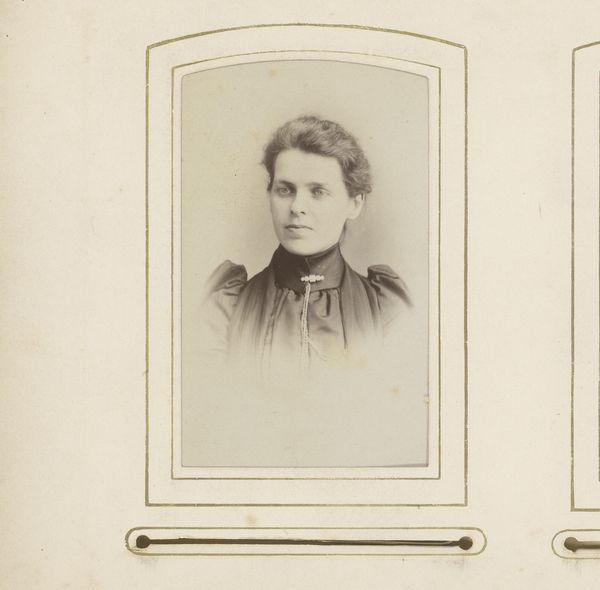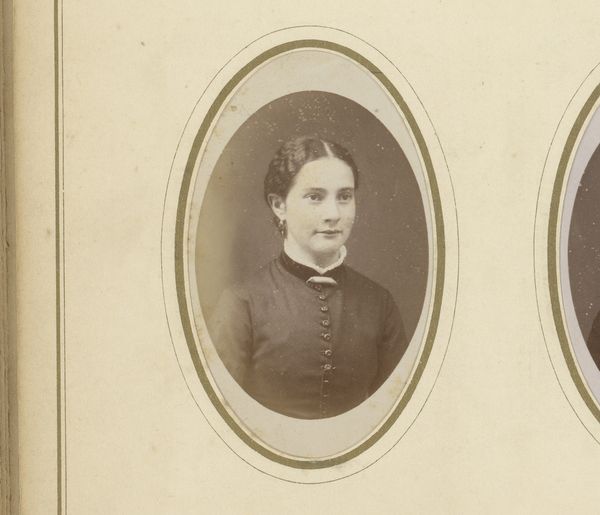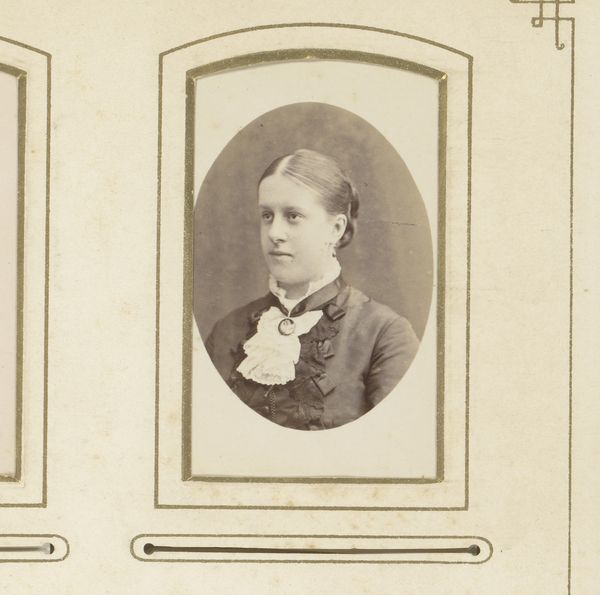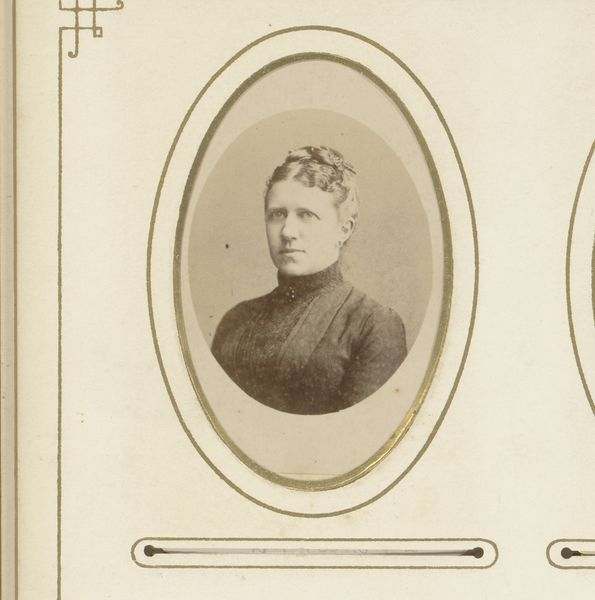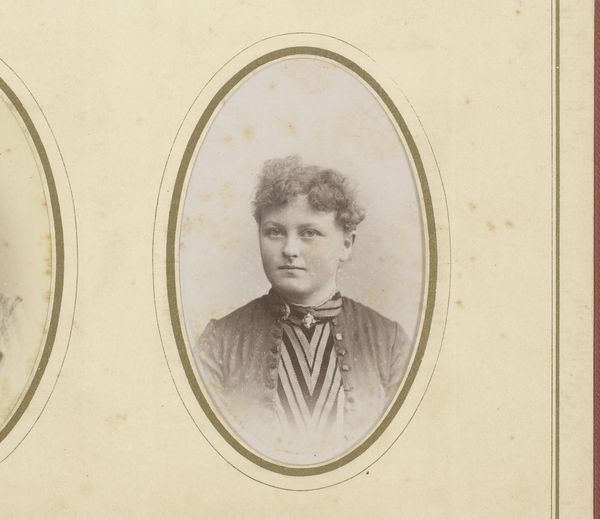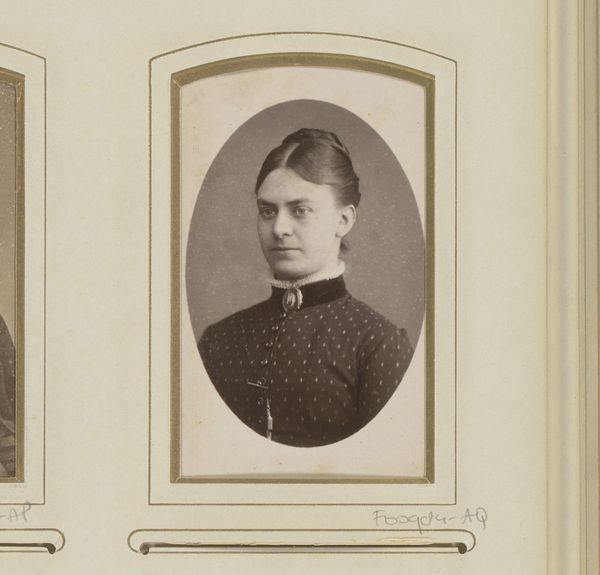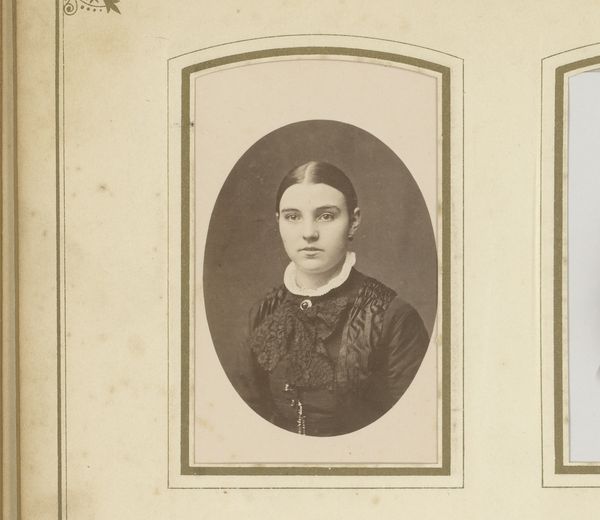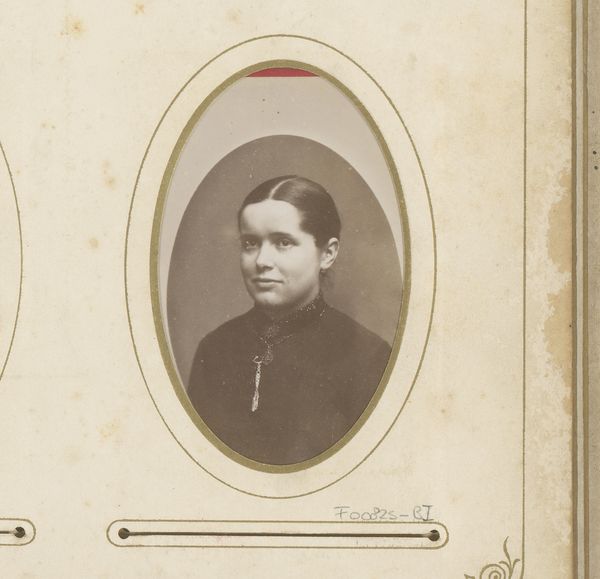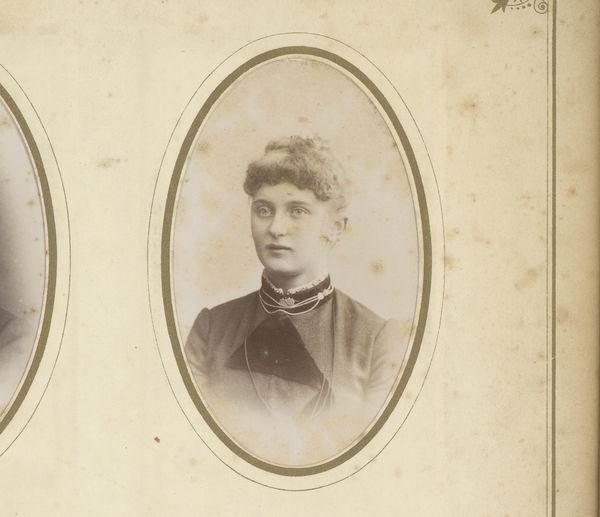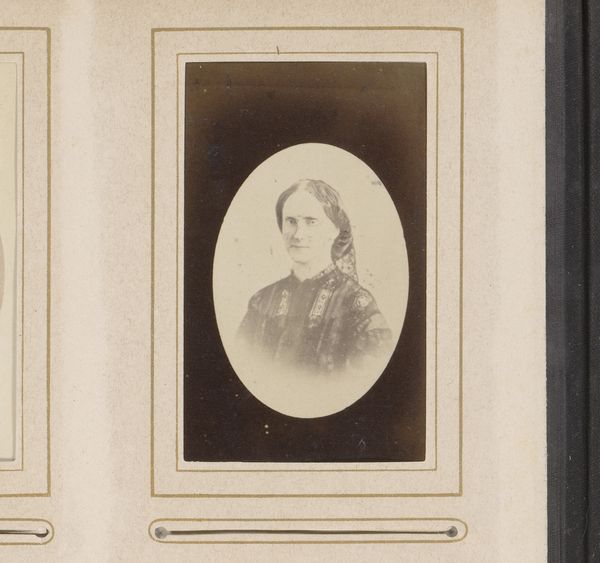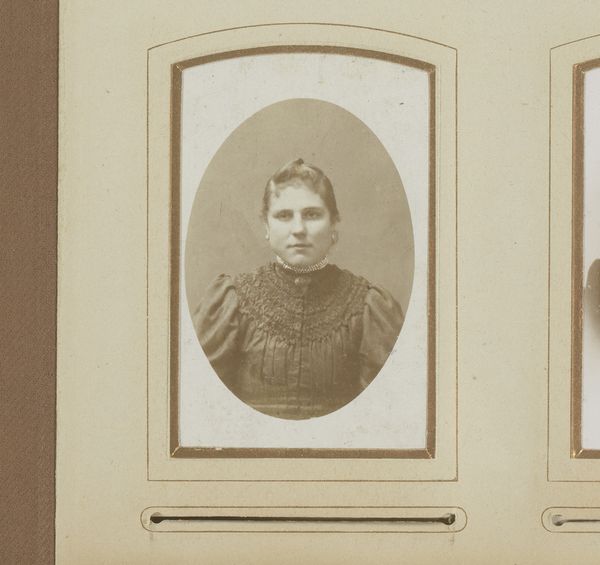
Dimensions: height 87 mm, width 53 mm
Copyright: Rijks Museum: Open Domain
Curator: I'm immediately struck by the muted palette—a deliberate choice, no doubt—accentuating the subject's stoicism. The formal arrangement creates a visually satisfying image. Editor: Yes, and the photograph, a gelatin silver print created sometime between 1860 and 1900, captures a woman in traditional attire. The artwork is titled “Portret van een jonge vrouw met witte klederdrachtmuts en oorijzers,” which translates to “Portrait of a young woman with a white traditional bonnet and earrings." It speaks volumes about cultural identity. Curator: Indeed. Observe the subject's steady gaze. The photographer directs the eye to this woman's most pronounced elements of attire: the clean lines of the bonnet, juxtaposed with the dark, almost severe clothing create contrast but also focus on its geometric presentation. Editor: The white bonnet symbolizes purity, tradition, perhaps even regional pride. The “oorijzers,” or the gold ornaments near her ears, represent the local identity and likely, economic status within that society. This all speaks of visual language, don't you agree? Curator: Certainly, the composition enhances the sense of symmetry with subtle angles that imply both openness and constraint, so essential in photographic portraits of this time. Editor: This isn’t just about form, though. It provides a tangible connection to a past way of life. To imagine this young woman’s story... I believe we see more than just a face frozen in time; we are privy to echoes of ancestry, culture, memory. Curator: A good point! Ultimately, I read an understated tension, rendered expertly through composition and tonality, into this intriguing photograph. Editor: And for me, it serves as an exquisite reminder that behind every image, there is a rich well of history and symbolic worth, just awaiting our thoughtful examination.
Comments
No comments
Be the first to comment and join the conversation on the ultimate creative platform.
